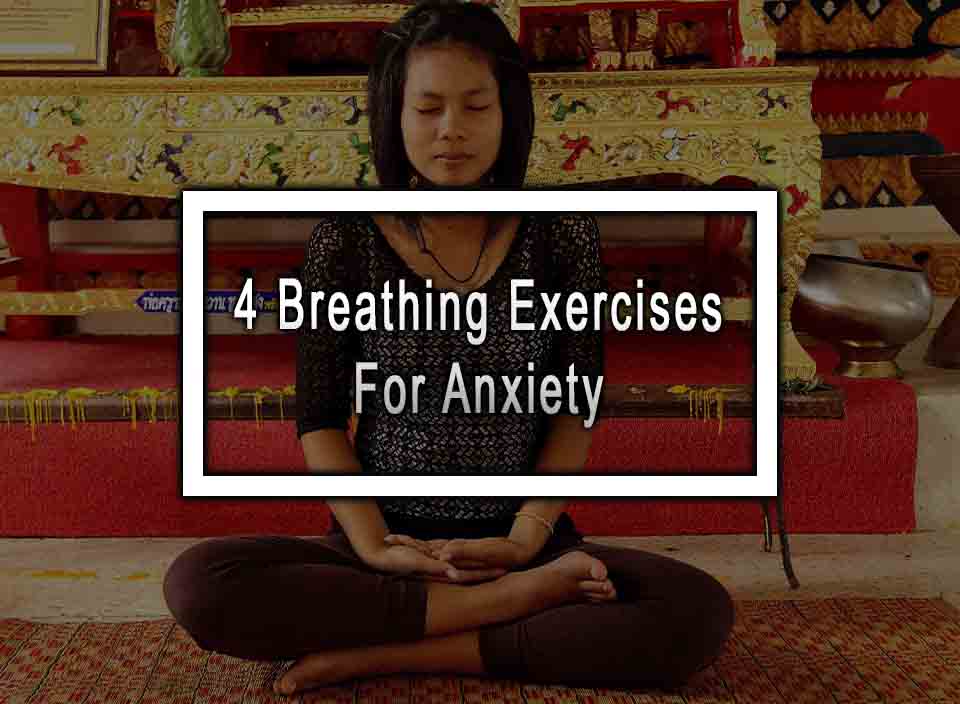Here Are The Breathing Exercises For Anxiety
Anxiety is a common mental health issue that affects millions of people worldwide. It is characterized by a feeling of worry, fear, and unease that can be overwhelming and debilitating. While there are various treatment options available for anxiety, such as medication and therapy, breathing exercises have proven to be an effective way to manage anxiety symptoms. Breathing exercises for anxiety involve deep breathing techniques that help to calm the mind and body, reduce stress, and promote relaxation. In this article, we will discuss some of the best breathing exercises for anxiety.
Diaphragmatic Breathing
Diaphragmatic breathing, also known as belly breathing, is a deep breathing technique that involves breathing from the diaphragm instead of the chest. This technique effectively reduces anxiety symptoms as it helps slow down the heart rate, reduce muscle tension, and improve oxygen flow to the brain.
To practice diaphragmatic breathing, find a comfortable and quiet place to sit or lie down. Place one hand on your chest and the other on your belly. Take a deep breath in through your nose, filling your belly with air, and then exhale through your mouth, pushing out all the air from your belly. Repeat this process for several minutes, focusing on your breath and letting go of distracting thoughts.
Equal Breathing
Equal breathing, also known as box breathing, is a simple breathing technique that involves inhaling and exhaling for an equal amount of time. This technique is effective in reducing anxiety symptoms as it helps to regulate the breath and calm the mind.
To practice equal breathing, find a comfortable place to sit or lie down. Take a deep breath in through your nose, counting to four, and then exhale through your mouth, counting to four. Repeat this process for several minutes, focusing on your breath and letting go of any distracting thoughts.
Alternate Nostril Breathing
Alternate nostril breathing, also known as Nadi Shodhana, is a breathing technique that involves breathing through one nostril at a time. This technique is effective in reducing anxiety symptoms as it helps to balance the nervous system and promote relaxation.
To practice alternate nostril breathing, find a comfortable place to sit. Use your right hand to close your right nostril and inhale deeply through your left nostril. Then, use your right thumb to close your left nostril and exhale through your right nostril. Repeat this process for several minutes, alternating nostrils with each inhale and exhale.
4-7-8 Breathing
4-7-8 breathing is a breathing technique that involves inhaling for four seconds, holding the breath for seven seconds, and exhaling for eight seconds. This technique effectively reduces anxiety symptoms as it helps slow down the heart rate, reduce muscle tension, and promote relaxation.
To practice 4-7-8 breathing, find a comfortable place to sit or lie down. Take a deep breath through your nose, counting to four. Hold your breath for seven seconds, and then exhale through your mouth, pushing out all the air from your lungs, counting to eight. Repeat this process for several minutes, focusing on your breath and letting go of distracting thoughts.
Conclusion

Breathing exercises for anxiety are an effective way to manage anxiety symptoms and promote relaxation. These techniques are easy to practice, and they can be done anywhere and at any time. By incorporating these breathing exercises into your daily routine, you can reduce stress, improve your mood, and enhance your overall well-being. If you are struggling with anxiety, consider trying these breathing exercises to help you find relief and peace of mind.
Breathing Exercises For Anxiety FAQs
Here are the most common questions about breathing exercises for anxiety.
1. How do deep breathing exercises help with anxiety?
Deep breathing exercises help with anxiety by slowing down the heart rate and lowering blood pressure, which helps promote a feeling of calmness and relaxation.
2. How often should I do breathing exercises for anxiety?
Breathing exercises for anxiety can be done as often as needed, whether that’s daily or just during times of increased stress.
3. Can breathing exercises help with panic attacks?
Yes, breathing exercises can help reduce the severity and length of panic attacks by promoting a feeling of calmness and by regulating the body’s response to stress.
4. Are there any risks associated with breathing exercises for anxiety?
Breathing exercises are generally safe and carry few risks. Still, if you have underlying medical conditions that affect your ability to breathe, you should consult with a healthcare professional before trying any breathing exercises.
5. Can breathing exercises be used in conjunction with other treatments for anxiety?
Yes, breathing exercises can be used in conjunction with other treatments for anxiety, such as therapy or medication. They can be a helpful and accessible tool to manage anxiety symptoms and promote overall well-being. It’s important to consult with your healthcare provider to determine the most effective treatment plan for you.











